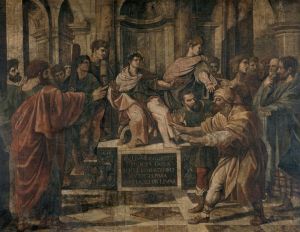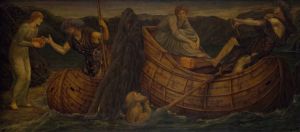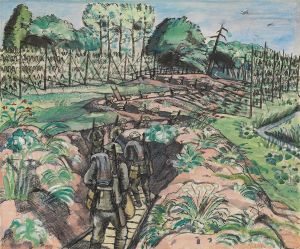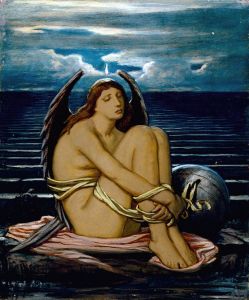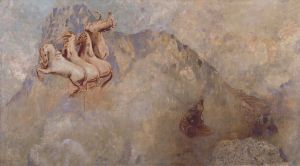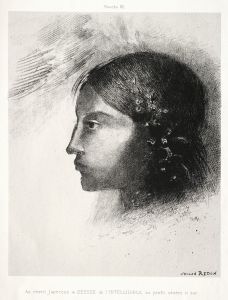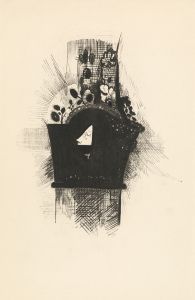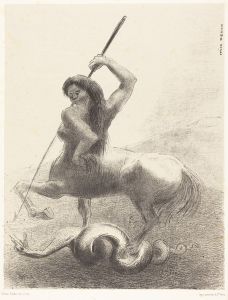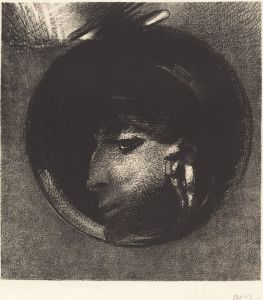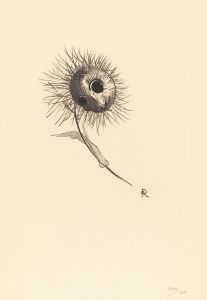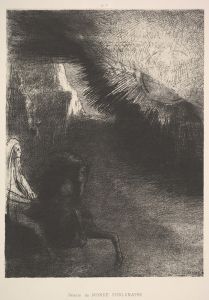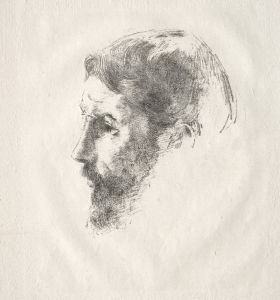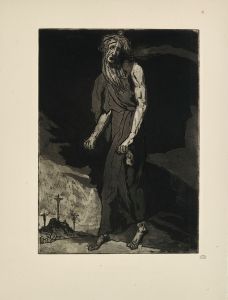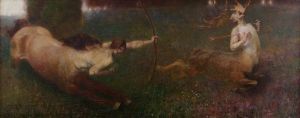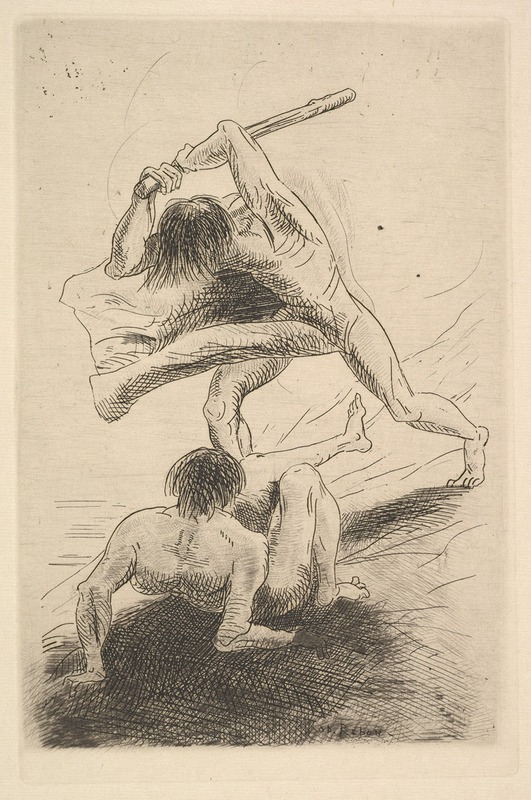
Cain and Abel
A hand-painted replica of Odilon Redon’s masterpiece Cain and Abel, meticulously crafted by professional artists to capture the true essence of the original. Each piece is created with museum-quality canvas and rare mineral pigments, carefully painted by experienced artists with delicate brushstrokes and rich, layered colors to perfectly recreate the texture of the original artwork. Unlike machine-printed reproductions, this hand-painted version brings the painting to life, infused with the artist’s emotions and skill in every stroke. Whether for personal collection or home decoration, it instantly elevates the artistic atmosphere of any space.
Odilon Redon, a French symbolist painter, created a work titled "Cain and Abel," which reflects his interest in biblical themes and his unique artistic style. Redon, born in 1840 in Bordeaux, France, is known for his dreamlike and often mysterious imagery, which frequently incorporates mythological and religious subjects. His work is characterized by a use of vivid colors and a penchant for exploring the human psyche and the spiritual realm.
The story of Cain and Abel originates from the Bible, specifically the Book of Genesis. It tells the tale of the two sons of Adam and Eve. Cain, the elder brother, was a farmer, while Abel was a shepherd. Both brothers made offerings to God, but God favored Abel's sacrifice over Cain's. In a fit of jealousy and anger, Cain killed Abel, committing the first murder recorded in the Bible. This story has been a profound source of inspiration for artists throughout history, symbolizing themes of jealousy, sin, and divine justice.
Redon's interpretation of "Cain and Abel" is not as widely documented as some of his other works, but it is consistent with his broader oeuvre, which often delves into the exploration of existential themes and the darker aspects of the human condition. Redon's style during the period when he might have created this work was marked by a transition from his earlier black-and-white charcoal drawings and lithographs, known as "noirs," to his later use of vibrant pastels and oils. This shift allowed him to explore color as a means of expressing emotion and spirituality.
In his artworks, Redon frequently employed symbolism to convey deeper meanings, and it is likely that his depiction of Cain and Abel would have been no exception. His use of color, form, and composition would have been intended to evoke the emotional and moral complexities of the biblical narrative. Redon's interest in the subconscious and the dreamlike quality of his work often invites viewers to interpret his paintings on a personal and introspective level.
While specific details about Redon's "Cain and Abel" are scarce, his body of work as a whole reflects a fascination with the mystical and the metaphysical. Redon's paintings often blur the line between reality and imagination, encouraging viewers to ponder the unseen forces that influence human behavior and the nature of good and evil.
Odilon Redon's contribution to the symbolist movement and his influence on later artists are significant. His ability to merge the fantastical with the spiritual has left a lasting impact on the art world. Though not much is specifically documented about his "Cain and Abel," it can be inferred that the work embodies the thematic and stylistic elements that define Redon's artistic legacy.





